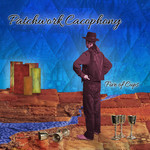Discovering the Mellotron
The Mellotron. The great grand relative of the modern sampler. The backbone of progressive rock keyboard playing. The bane of roadies and keyboard technicians everywhere.
I’ve never really been tempted by mellotrons, but then I suppose I’ve never really identified them in music. I hadn’t realised until my recent foray into analogue synthesizers quite how late it was that polyphonic synthesizers came onto the market, and that a lot of things I had assumed were synths of one form or another were in fact mellotrons.
A quick summary to start with: a mellotron is a Heath-Robinson style keyboard contraption consisting of loops of tape which were played (much like samples) in response to keys being pressed. There was one piece of tape per key, and though I say “loop”, in fact they were fixed lengths which meant that after eight seconds, the sound cut out. The tapes and mechanism were fragile and imperfect, and the recordings which they played back were at best idiosyncratic. The classic mellotron sounds include a flute, male and female choirs, a very strange brass sound and, of course, the class “three violins” sound.
Recently, perhaps fuelled by listening to Transatlantic and early Genesis, I have had a nagging urge to investigate mellotron sounds. More and more I find that the limitations of instruments bring with them inspiration and character, and so they appeal to me on that level. Armed with some free mellotron soundfonts and fluidsynth I’ve spent a few hours over the last week experimenting and trying to get a feel for the instrument.
The eight second limit encourages a certain playing style which includes “spidering” chords so that you raise and replace a finger at a time in order to give the impression of a chord lasting longer. Mellotrons also lack velocity sensitivity and so an external volume pedal is a must. They have quite limited range, which is also quite a novelty for me, but they are of course truly polyphonic. It’s taken me a little while to get used to the idea that I can — and should — play chords with the flute patch. No, it’s not what a flute would sound like but then again, the mellotron “flute” isn’t very flute like even when played monophonically, so it makes more sense to think of it as a completely different instrument.
During all this playing around I have recorded a couple of ideas, one of which I feel deserves a proper recording effort, the other of which (a mellotron only cover of Fusion Orchestra 2’s “Secret Shadow”) I hope will never be heard by another living soul. So far I’m finding myself quite taken with the instrument but I have a strong aversion to taking computers out on the road for live playing so if I’m truly going to start using them, I need to track down a hardware equivalent.
A real mellotron is out of the question, and a modern digital mellotron carries a luxury price tag. Perhaps the best option is a Nord Stage 2, but sadly I already have a Nord Stage Classic and the cost of the replacing it primarily for the ability to play back mellotron sounds also makes it out of the question. As such I’ve started scouring ebay for Emu Classic Keys and Vintage Keys modules which I’m told give a passable impression. Watch this space…
Tags: mellotron, music|Flattr this!

